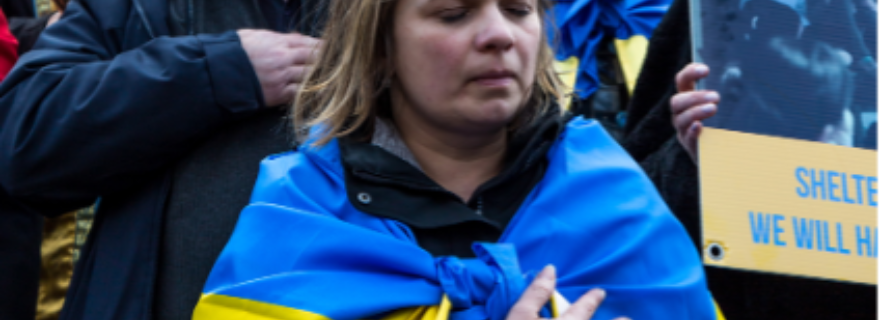From Trauma to Tactics: Strategic Calculations of Sexual Violence in Ukraine
Since the start of the conflict in Ukraine, UN agencies have reported cases of conflict-related sexual violence. This blogpost explores how Russian military leadership exploits the knowledge that their troops perpetrate sexual violence in their strategic thinking.
Since Russia invaded Ukraine on 24 February 2022, different UN agencies have recorded cases of sexual violence committed by both sides of the war. The international outcry has been substantial with some alleging that Russia is perpetrating sexual violence as part of a military strategy. Are those allegations substantiated? To understand the occurrence of conflict-related sexual violence in Ukraine more accurately, we need to study the possible objectives that can be reached by committing this type of violence. Through analysis of these objectives, we can explore if, and how, sexual violence in this war has strategic effects.
Reports on conflict-related sexual violence in Ukraine show that sexual violence occurs in two situational contexts. First, in territories that Russian troops invaded and occupied, cases of rape, gang rape, and other forms of sexual violence have been reported. Second, in detention centres in occupied territories, men and to a lesser extent women have experienced sexual torture, rape and forced nudity. It is important to note that there is currently no concrete proof that Russian military leadership has explicitly ordered sexual violence. However, there are still strategic advantages to allowing sexual violence to occur, both at the organisational and the operational level.
In the first context of Russian-occupied territories, it is likely that commanders strategically exploit sexual violence to consolidate their position of power over their unit and compensate soldiers for the adversity that they are facing in war. Russian forces appear to be facing low morale, which risks the position of the commander over their unit. By ignoring soldiers’ perpetration of sexual violence, commanders can ensure the loyalty of their soldiers. Moreover, sexual adventures, including sexual violence, can be compensation for soldiers’ loyalty and the adversaries they face in war.
Sexual violence traumatises and humiliates victims, especially in societies where there is a strong stigma on sexual violence, as is the case in Ukraine. Victims of sexual violence in Ukraine have reported feeling isolated and ashamed after their assaults. The trauma and stigmatisation that victims and their communities face can lead to the destruction of social ties and has the effect of demeaning the enemy, which in turn can be strategically exploited to dominate a population.
In detention centres the prevalence of sexual violence as part of the repertoire of torture tactics, in combination with reports that commanders execute or are present during the execution of sexual torture, shows a pattern that indicates at least some level of knowledge from military leadership. This makes it more likely than in the first situational context that sexualised violence is authorised. Sexual violence in this case not only has the aim of extracting information for tactical purposes but also to terrorise Ukrainian army servicemembers and their family members. Since sexual violence is a way of dishonouring and humiliating a victim, it conveys the message that the victim is powerless in an attempt to break them; they are made to feel incompetent to fight and defend their country.
Sexual violence does not have to be ordered to constitute a strategy. On the one hand, this is seen in the traumatising and intimidating effect that sexual violence can have on a population. The overall Russian strategy to subjugate the Ukrainian population can be achieved through terrorisation, and sexual violence may be part of that strategic arsenal. In turn, instilling fear aims to break Ukraine’s willpower to fight. This is also demonstrated in the sexual torture of officials and their family members in detention centres. On the other hand, available data suggests that commanders have used the knowledge that their subordinates perpetrate sexual violence in their strategic thinking. In the situational context of occupied cities and villages, witness reports show that commanders at the very least have the knowledge and do not actively seek to prohibit sexual violence, sometimes even encouraging it. Tolerating sexual violence is a strategic stance for commanders because it maintains their position of power. In one case a Russian commander was even promoted to colonel after it became known that his troops had perpetrated sexual violence. Therefore, sexual violence is not only part of a controlling tactic, but also used at the frontlines of an offensive. However, data currently does not allow to conclude that sexual violence is adopted as an explicit larger strategy. There have been reports of soldiers and commanders interfering with their own troops’ attempted sexual assaults. Overall, while recognising that sexual violence can be exploited for tactical and strategic purposes, it becomes imperative to view conflict-related sexual violence as a preventable injustice.

